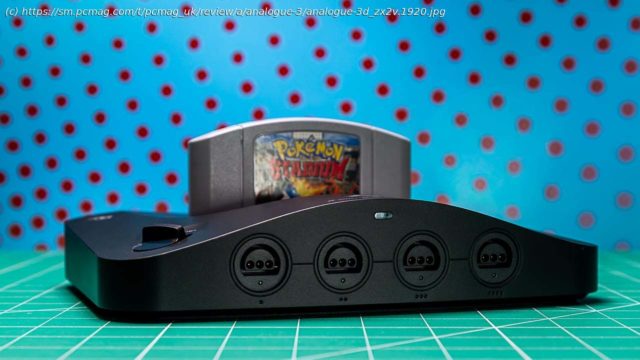The Analogue 3D console is a game preservationist’s dream, perfectly preserving original Nintendo 64 titles while expertly scaling them for modern displays.
The topic of game preservation is still in its infancy and is often limited to emulators and remasters. But when it comes to replicating beloved retro systems, few companies compete with Analogue. Following 2023’s excellent Analogue Duo, a recreation of the classic PC Engine/Turbo Grafx-16, the company returns with the Analogue 3D ($249.99), a 4K reimagining of the Nintendo 64 that’s 100% compatible with the system’s original games and accessories. Simply put, the Analogue 3D is a landmark for game preservation and restoration. For its true-to-Nintendo 64 experience and many additional features, it easily earns our Editors‘ Choice award for retro gaming consoles.Hardware: The 1990s, Now in 4K
There’s a key distinction between the Analogue 3D and the typical emulation system: The Analogue 3D is built using a 220k LE Altera Cyclone 10GX FPGA (Field-Programmable Gate Array). The FPGA is capable of replicating original hardware, and unlike software emulation, it is programmed to behave exactly like the original console’s chips.
In doing so, the Analogue 3D side steps many of the incompatibilities found in typical software emulation, such as graphic and audio glitches, input lag, and frame rate issues. Analogue claims that these problems have been eliminated thanks to the hardware, ensuring 100% compatibility with the entire N64 catalog, including the European and Japanese releases. This proved accurate in testing, which I’ll cover later in this review.
The Analogue 3D presents your N64 titles in 4K resolution, about 10 times the resolution of the original Nintendo 64. The console does more than upscale the games; rather, it replicates the image of these games that exists in your mind’s eye.
After all, a cleaned-up image doesn’t always convey the artist’s intent and can, at times, muddy assets and compromise a game’s art direction. As a result, CRT filters are common in remasters and collections. However, few emulators replicate the warmth and texture of an old-school CRT quite like the Analogue 3D. The games look good.
Even if you lack the eye for that type of detail (or be might be too young to remember it), you can still appreciate the system on a surface level. Although it’s a reasonably lightweight console at 1.8 pounds, the Analogue 3D retains the original system’s overall design, scaling it down on all sides. The ports on the back accommodate modern connections: an HDMI port, two USB ports, and an SD card slot (which supports cards up to 1TB). Vents are located along the port hub and beneath the system. The Analogue 3D quietly hums once turned on, but it’s barely noticeable when you start playing.
One of the Nintendo 64’s most distinctive features was its four controller ports built into the system’s front. Many Nintendo 64 games offer some sort of multiplayer mode, and that’s perfectly preserved here. You can plug your original Nintendo 64 controllers and accessories into the system and use them just like you did years ago. You don’t need the N64’s Expansion Pak or Rumble Pak; the Analogue 3D replicates them on a system level.






